
Photo by Juan David Cano
Growing Cannabis Seeds: Here’s Everything You Need To Know
Growing cannabis seeds can be incredibly rewarding. Our step-by-step guide has all the info you need, from seed selection to storage.
Starting cannabis from seed can be extremely rewarding. Not only do you get to take your plants through a complete growth cycle, but you might also get to produce some seeds of your own. With seeds, anyone can go from a cannabis enthusiast to an amateur breeder.
You’ll be able to custom tailor your plants to meet your specific needs or possibly develop a new strain or two. To help you experience the wonders of seeds, we’ve created this article – the ultimate guide to growing cannabis seeds.
What Are Cannabis Seeds?

Cannabis seeds are obviously the seeds of our favorite herb, but can you grow any old seed into a flowering weed plant? The important thing for successfully growing cannabis is to only cultivate female plants. Female plants will provide you with the highest quality flowers for smoking. However, those same female plants should be seedless, so where do cannabis seeds come from?
Cannabis seeds are produced when a male plant fertilizes a female plant. You don’t want this to happen if you’re growing females for smokable flower because then the buds are cluttered with seeds. That’s why cultivators isolate their female plants as soon as they identify the sex, and you should too.
Of course, if seeds are desirable for reproduction or hemp seed oil, then this process is allowed to happen. However, when it comes to creating cannabis seeds to produce a new generation of plants, there are some other techniques experienced cultivators will use.
How To Find And Choose The Right Cannabis Seeds
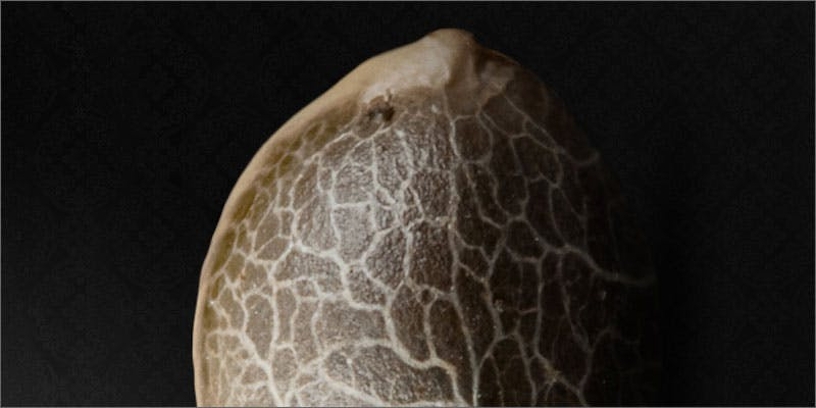
If you’re growing from a clone, it’s unlikely that your plant will produce seeds. Seeds develop after a male cannabis plant pollinates a female. Only female plants produce seeds. Yet, when you smoke cannabis, you’re typically smoking the unfertilized bud of the female flower. This can make it a bit difficult to actually find seeds if you’re interested in growing from scratch.
There are a couple of ways you can source your seeds. If you live in a legal medical or recreational state, ask your favorite dispensary for reputable local seed companies. Many people also order seeds from online seedbanks. Though, this is illegal in the United States. Seeds for “souvenir purposes” are legal in many regions around the world, allowing many seedbanks to ship worldwide.
Though ordering seeds is illegal in the U.S. and you can face criminal charges, seed arrests are uncommon in comparison to arrests from growing or germinating plants. It’s not uncommon, however, to have your mail-ordered seeds confiscated by U.S. customs. If you order seeds from an international seed bank and they are found, you will get a letter in the mail saying that your seeds have been tossed out.
Do All Cannabis Plants Produce Seeds?

Cannabis plants only produce seeds after a male plant pollinates a female plant. It’s uncommon to find seeds in dispensary quality bud, and it’s also unlikely that your plants will develop seeds if you’re growing from a clone. When you smoke or vape marijuana, you’re typically consuming the unpollinated, seedless female flower. This part of the plant is named sinsemilla, meaning “without seed”.
Female plants produce significantly more resin than male plants, which is why bud from female flowers is what we’ve come to cultivate for harvest. Marijuana resin in the form of trichomes produces has a crucial role in the plant’s reproductive cycle.
The trichome-heavy female marijuana bud is designed to capture male pollen spores in order to develop seeds and reproduce. When females are kept away from the males, not do you create sensimillia, but you also kickstart trichome production.
So, while all female plants are capable of producing seeds, pollination is required for their development. Breeders and seed banks play the part of geneticists and help spur evolution by selectively mixing pollen from specific male plants with the genes from selected female plants. This creates seeds featuring hand-selected and carefully chosen traits.
How To Choose Your Seeds
Increase Germination Chances With A Grow Kit
As you can tell, getting seeds to germinate and survive can be pretty tough. They need the right environment and nutrients to truly become healthy, flower-bearing plants.
Enter the STRNG Seeds Premium Grow Kit—the easiest way to grow weed. This eco-friendly kit comes complete with everything you need to grow a healthy plant in just 10 weeks:
- 2 high-quality coco compost mixes (over 3 liters of dirt when expanded)
- 3 autoflowering seeds from STRNG Seeds of your choice
- Biodegradable fabric container
- High-quality organic nutrients
- Instruction manual
- 1 germination plug
That germination plug is a lifesaver for protecting and growing your seedlings. It has predetermined pH levels to give your seeds the optimal start they need. From there, follow the instructions to guarantee a plentiful harvest 10 weeks down the road, courtesy of STRNG Seeds.
Best Cannabis Seed Banks 2024 Has Seen

Finding seeds may be a little tricky, but choosing the right seeds to grow is easy. There are a few qualities that set good seeds apart. When you’re picking out your seeds, watch for these features:
- Color: Look for a dark brown teardrop-shaped seed. Some seeds have dark stripes or splotches of different brown, black, or tan shades. Avoid pale or green seeds.
- Size: Indicas produce larger seeds with striping. Sativa seeds are smaller and more uniform in color.
- Hardness: A good seed has a hard outer shell. Don’t pick seeds that are soft or damaged.
Look For These Traits
Thanks to all of the innovative breeders out there, modern day marijuana has become a very diverse plant. You can find fast-growing varieties, varieties designed for perfect outdoor yields, and strains selectively bred to grow well indoors. Short, stocky indica plants are typically the best indoor choice. If you’d like a plant that grows to a manageable size but has more of a sativa high, you can find a balanced hybrid with ease.
Doing a little research ahead of time will help you avoid splurging on seeds that are difficult to grow in your intended environment. If you’re lucky enough to have a great outdoor grow space, a slower-growing sativa will make the best of the outdoor season.
Select The Right Strain
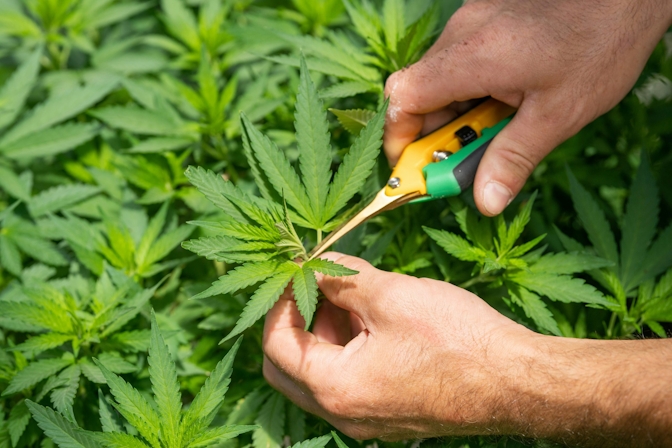
Crystalweed / Unsplash
Thanks to all of the innovative breeders out there, modern day marijuana has become a very diverse plant. You can find fast-growing varieties, varieties designed for perfect outdoor yields, and strains selectively bred to grow well indoors. Short, stocky indica plants are typically the best indoor choice. If you’d like a plant that grows to a manageable size but has more of a sativa high, you can find a balanced hybrid with ease.
Doing a little research ahead of time will help you avoid splurging on seeds that are difficult to grow in your intended environment. If you’re lucky enough to have a great outdoor grow space, a slower-growing sativa will make the best of the outdoor season.
Types Of Cannabis Seeds For Sale

Photo by cendeced / Adobe Stock Photo
The first category of cannabis seeds you’ll likely come across is “feminized seeds.” As you probably guessed, this is referring to the gender of the plant. While female plants are desired for growing smokable flower, there are pros and cons to feminized seeds.
The most obvious pro to growing weed from feminized seeds is getting a female plant. In fact, many breeders advertise having a “100 percent” success rate with their feminized cannabis seeds. This saves growers the time of identifying and separating male and female plants.
However, as experienced breeders are well aware, feminized seeds run the risk of developing into hermaphrodites. Female cannabis plants can form a hermaphrodite condition, where male flowers grow on the same plant, alongside female flowers, for a variety of reasons. But the biggest danger here is the male flowers self-pollinating the female flowers. All the resulting buds will be littered with seeds and not ideal for smoking.
At the same time, feminized seeds are an easy option for newbie growers and medical cannabis patients. Just be sure to keep an eye on those plants.
Feminized Seeds
The next term you’ll come across when shopping for weed seeds is “auto-flowering.” If you’re familiar with some cannabis cultivation basics, you know that the plant has a vegetative growth period and then switches into a “flowering” period where it grows the buds we know and love. What activates that switch is the change in light, from long days to shorter ones as would happen naturally when the seasons change from summer to fall.
In the spring, blue light wavelengths are more predominant. Plants rely on this blue light to prosper during vegetative growth. During the late summer and early autumn, red wavelengths of light from the sun become more abundant. This red light is packed with the energy the plant needs to develop complex flowers.
To flower photoperiod plants early, most indoor growers put the plants on a strict 12/12 light schedule. Meaning 12 hours under the lights followed by 12 hours of complete darkness.
Auto-flowering seeds, however, are different. Auto-flowering cannabis seeds don’t require a change in light to enter the flowering stage in their life cycle. They naturally begin flowering after a certain amount of time instead.
As a result, most auto-flowering plants are ready to harvest in under 10 weeks. Flowering often begins at a mere two to four weeks.
Auto-Flowering Seeds
Cultivators developed these seeds by breeding regular high-THC Cannabis sativa with its very close relative Cannabis ruderalis. Cannabis ruderalis is a type of cannabis that grows in the wild. It’s typically smaller than Cannabis sativa and has a much lower THC count. However, when crossed with high-THC strains, breeders have developed auto-flowering plants with high THC counts that are low maintenance.
Though there is variation from strain to strain, auto-flowering strains tend to be much smaller than their standard counterparts. As a result, yields from auto-flowering plants tend to be slightly less. On the high end, some auto-flowering cannabis seeds can yield up to 150 grams per plant, though the average is somewhere in the double digits.
Auto-flowering seeds are particularly useful in northern climates, which have extremely long summer days. Once the nights become long enough to trigger flowering, the rain and frost soon follow.
This means that many plants fail to develop full flowers before the cold arrives.
Auto-flowering cannabis seeds also have some advantage indoors, especially for those who love sativas. Auto-flowering plants are generally small, compact, and can handle a wider range of grow environments.
Sativas, on the contrary, are tall plants with a long flowering period. Starting with auto-flowering, sativa seeds makes it easier to grow these wily plants indoors.
Most indica plants, however, are also short and perform well indoors regardless of whether or not you start with auto-flowering seeds.
Critics of auto-flowering seeds often find fault with the low yields of the plant. A photoperiod sensitive indica will produce short, manageable plants with a much higher yield than many auto-flowering varieties.
However, auto-flowering strains provide growers with the ability to produce extremely fast, easy to grow crops with excellent adaptations to the cold.

Photo by Connor Fyfe for Herb
Cultivators developed these seeds by breeding regular high-THC Cannabis sativa with its very close relative Cannabis ruderalis. Cannabis ruderalis is a type of cannabis that grows in the wild. It’s typically smaller than Cannabis sativa and has a much lower THC count. However, when crossed with high-THC strains, breeders have developed auto-flowering plants with high THC counts that are low maintenance.
Though there is variation from strain to strain, auto-flowering strains tend to be much smaller than their standard counterparts. As a result, yields from auto-flowering plants tend to be slightly less. On the high end, some auto-flowering cannabis seeds can yield up to 150 grams per plant, though the average is somewhere in the double digits.
Auto-flowering seeds are particularly useful in northern climates, which have extremely long summer days. Once the nights become long enough to trigger flowering, the rain and frost soon follow.
This means that many plants fail to develop full flowers before the cold arrives.
Auto-flowering cannabis seeds also have some advantage indoors, especially for those who love sativas. Auto-flowering plants are generally small, compact, and can handle a wider range of grow environments.
Sativas, on the contrary, are tall plants with a long flowering period. Starting with auto-flowering, sativa seeds makes it easier to grow these wily plants indoors.
Most indica plants, however, are also short and perform well indoors regardless of whether or not you start with auto-flowering seeds.
Critics of auto-flowering seeds often find fault with the low yields of the plant. A photoperiod sensitive indica will produce short, manageable plants with a much higher yield than many auto-flowering varieties.
However, auto-flowering strains provide growers with the ability to produce extremely fast, easy to grow crops with excellent adaptations to the cold.
How To Germinate And Sprout Your Cannabis Seeds

In many places, cannabis becomes illegal once seeds begin to germinate. Germination is simply the process of getting your sprouting your seed to grow a plant.
If you are able to safely germinate your seeds, there are a few ways to go about the process.
Almost every grower has their preferred germination method, but here is a brief summary of the most popular techniques:
Pre-Soak Method

The paper towel method is one of the most popular germination methods out there. It takes a little longer than the pre-soak method, but there’s less of a risk of rot if you’re observant. You simply moisten a paper towel, fold it, place the seeds inside the fold, and then place the damp towel into a plastic baggie.
Keep the plastic baggie in a dark, warm place, but keep an eye on it so that it doesn’t mold. After a couple of days, a root will appear. You can then transfer the germinating seed into soil.
Here's How To Do It
- Dampen the paper towel with purified water. You’ll want to make sure that the paper towel isn’t dripping wet, as that increases the opportunity for rot. Misting the paper towels with a spray bottle rather than dunking them into water will ensure that they don’t get too wet. Damp cotton rounds can also be used in place of paper towels.
- Place your seeds in the middle of the damp paper towel and fold. Make sure your seeds are decently spaced from one another, and are completely covered by the paper towel.
- Keeping the paper towel horizontal, slip the moistened cloth into a plastic baggie. Seal the bag part way, and make sure it stays horizontal.
- Blow a bit of air into the plastic bag. Once the bag is slightly puffed up, seal the air inside. Seeds need a little air to germinate. Store the baggie in a warm, dark place.
- Check your seeds daily to see if they’ve begun to sprout. Once a taproot begins to show, they’re ready for soil. As with the pre-soak method, make sure you handle your seeds with care to avoid damaging them.
The Paper Towel Method

The paper towel method is one of the most popular germination methods out there. It takes a little longer than the pre-soak method, but there’s less of a risk of rot if you’re observant. You simply moisten a paper towel, fold it, place the seeds inside the fold, and then place the damp towel into a plastic baggie.
Keep the plastic baggie in a dark, warm place, but keep an eye on it so that it doesn’t mold. After a couple of days, a root will appear. You can then transfer the germinating seed into soil.
Here's How To Do It
- Dampen the paper towel with purified water. You’ll want to make sure that the paper towel isn’t dripping wet, as that increases the opportunity for rot. Misting the paper towels with a spray bottle rather than dunking them into water will ensure that they don’t get too wet. Damp cotton rounds can also be used in place of paper towels.
- Place your seeds in the middle of the damp paper towel and fold. Make sure your seeds are decently spaced from one another, and are completely covered by the paper towel.
- Keeping the paper towel horizontal, slip the moistened cloth into a plastic baggie. Seal the bag part way, and make sure it stays horizontal.
- Blow a bit of air into the plastic bag. Once the bag is slightly puffed up, seal the air inside. Seeds need a little air to germinate. Store the baggie in a warm, dark place.
- Check your seeds daily to see if they’ve begun to sprout. Once a taproot begins to show, they’re ready for soil. As with the pre-soak method, make sure you handle your seeds with care to avoid damaging them.
Direct Soil Method
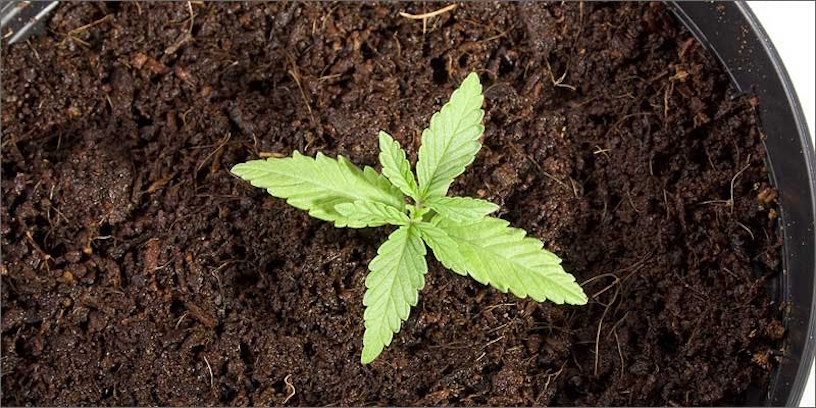
Once your seedlings have well-established roots, you can then transplant them into a bigger container. They’ll typically reach this point after 2 to 6 weeks as seedlings.
The tell-tale sign that they’re ready to be moved is when you see a sudden spike in leaf growth, indicating that the plants are now in a vegetative growth phase. The leaves will be recognizable as marijuana leaves.
Giving your seeds a fighting chance from the beginning is a must if you want a top-quality harvest. Like in humans, what happens in the initial stages of development is important for the overall survival and health of the plant.
If you happen to have enough seeds, you may want to try each of the methods outlined in this article to see which garners the best results for your particular growing style.
Here's How To Do It
Some may claim that they can tell whether a plant is male or female simply by looking at the seed. Is this actually possible? No.
Unless you specifically buy feminized seed, there is no way to tell whether or not your plant is a male or a female prior to early bud development. Both male and female seeds look exactly the same.

Photo by HQUALITY / Adobe Stock Photo
When your little plants reach about the 6-week mark, you’ll be able to tell their sex. If you’ve started from feminized seed, you won’t need to worry about this step. Feminized seeds only produce female cannabis plants, making them great options for folks who plant to just grow from clone after their initial start with seeds.
If you’re not growing from feminized seed, sexing your plants is one of the most important parts of the early growing process. In order to get a good harvest of usable cannabis flower, you’ll need to separate your male and female plants. If you do not separate your plants, you risk unwanted pollination.
When female plants are pollinated, they stop spending energy on developing potent buds. Rather, they spend energy developing seeds. Here’s a brief summary of what to look out for.
Can You Tell The Sex Of A Cannabis Plant From The Seed?
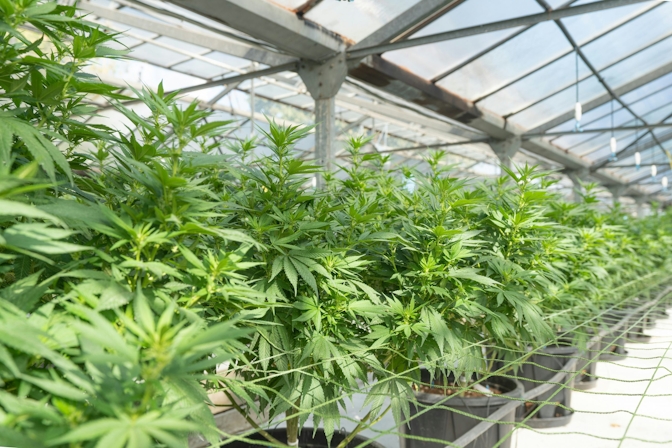
Crystalweed / Unsplash
Some may claim that they can tell whether a plant is male or female simply by looking at the seed. Is this actually possible? No.
Unless you specifically buy feminized seed, there is no way to tell whether or not your plant is a male or a female prior to early bud development. Both male and female seeds look exactly the same.
How To Sex Your Cannabis Sprouts

When your little plants reach about the 6-week mark, you’ll be able to tell their sex. If you’ve started from feminized seed, you won’t need to worry about this step. Feminized seeds only produce female cannabis plants, making them great options for folks who plant to just grow from clone after their initial start with seeds.
If you’re not growing from feminized seed, sexing your plants is one of the most important parts of the early growing process. In order to get a good harvest of usable cannabis flower, you’ll need to separate your male and female plants. If you do not separate your plants, you risk unwanted pollination.
When female plants are pollinated, they stop spending energy on developing potent buds. Rather, they spend energy developing seeds. Here’s a brief summary of what to look out for.
Females
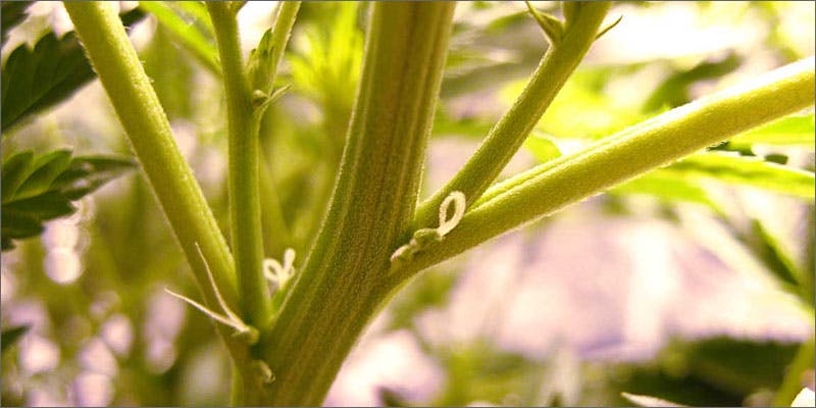
The first and foremost way to tell whether or not your plant is a female is to watch for the development of pistillate hairs. When you pick up some dried bud at a dispensary, you’ve probably noticed the orange hairs that cover the dried flower. The bud of a growing female plant will begin to grow these hairs as soon as a flower begins to form.
These pistillate hairs are white while the plant is young and growing, but they’ll often turn dark orange or red once it matures and the flower is cut and dried.
In a young plant, look for a small bud with one or two long, white protruding hairs. These hairs are unique to females. So, if you see them, you’ll know that the plant will produce a potent, smokable flower as long as it remains unpollinated.
Males
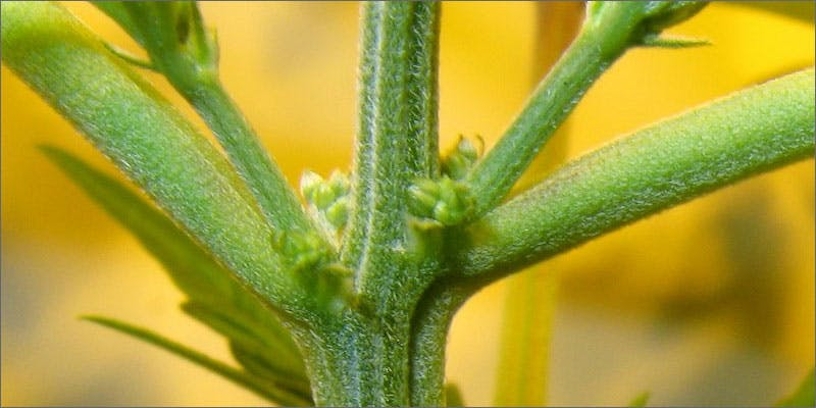
As female flowers mature, they grow to look like the flower we’re most familiar with finding in marijuana dispensaries. Male flowers, however, develop bulbous “pollen sacks” which make them easily identifiable.
Look for a tiny, tulip-like bulb without any pistillate hairs sprouting from the top. Once your plant begins to show signs that it is male, you should separate them from female sprouts. If you leave the two together the male plant will produce pollinate the female plant as it matures.
Once the female plant is pollinated, it will begin to expend energy producing seed rather than further developing its flower. This is great if you’re hoping to create and save your own seeds. But, if your goal is to get a great harvest from your female plants, you’ll want to avoid pollination.
How To Create Your Own Cannabis Seeds
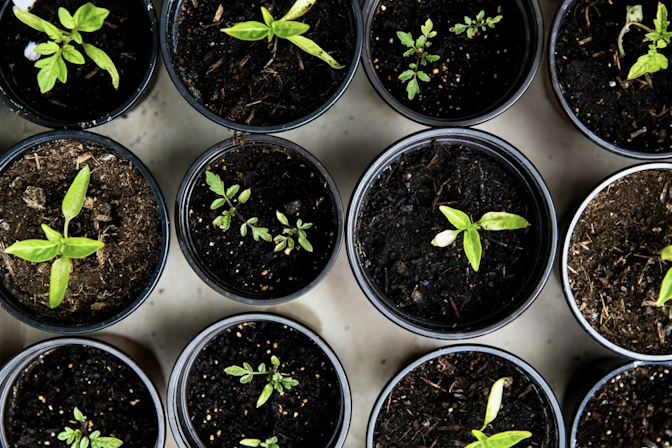
There are a lot of reasons to hang on to male cannabis plants. The best reason?
You can use them to create your own seeds. You can either pollinate an entire female cannabis plant for a TON of seeds, or you can pollinate select branches to save some of your harvests and still have some seeds for next year.
Getting Started

If you’ve been following along, you know that your male plants and female plants should be grown in separate locations to avoid unwanted pollination. One slightly difficult way to pollinate your females is to simply move one of your female plants into the same room as your favorite mature male plant.
Once together, give the male plant a good shake to cause the pollen to spread around the air and fertilize the female. After a day or two and a few good shakes of the male plant, you can then return the female to a proper growing environment so that it has the light and resources it needs to produce seeds. Or, you can continue to grow the two together if there’s enough of the proper light and nutrient resources around.
While this option mimics what typically happens when pollen just-so-happens to reach female plants in the natural world, this method isn’t exactly ideal if you want an easy, controlled way to produce your own seeds. For one, pollinating an entire female plant means that you’ll be doing an awful lot of digging once seed-harvest time roles around.
You also waste some potentially good bud this way. Pollinating an entire plant will produce a whole hell of a lot of seeds. If you’re growing as a hobby or for your own personal use, you really won’t need that many seeds.
Pollinating Your Females

Photo by vladk213 / Adobe Stock Photo
Option 1: Let Nature Take Its Course
If you’ve been following along, you know that your male plants and female plants should be grown in separate locations to avoid unwanted pollination. One slightly difficult way to pollinate your females is to simply move one of your female plants into the same room as your favorite mature male plant.
Once together, give the male plant a good shake to cause the pollen to spread around the air and fertilize the female. After a day or two and a few good shakes of the male plant, you can then return the female to a proper growing environment so that it has the light and resources it needs to produce seeds. Or, you can continue to grow the two together if there’s enough of the proper light and nutrient resources around.
While this option mimics what typically happens when pollen just-so-happens to reach female plants in the natural world, this method isn’t exactly ideal if you want an easy, controlled way to produce your own seeds. For one, pollinating an entire female plant means that you’ll be doing an awful lot of digging once seed-harvest time roles around.
You also waste some potentially good bud this way. Pollinating an entire plant will produce a whole hell of a lot of seeds. If you’re growing as a hobby or for your own personal use, you really won’t need that many seeds.

Crystalweed / Unsplash
Option 2: Pollinating Select Branches
This option is a little nicer for home growers who may not have very many plants to begin with and don’t want to use an entire female for seed creation. In this option, you’ll only be pollinating a few select branches of a specific plant. This will give you significantly fewer seeds than pollinating an entire plant, but it is relatively easy and will give you enough of a yield to replenish your next round of crop.
Here’s what you’ll need:
- 4 to 6-inch flower clippings from a mature male flower
- A female plant with pruned lower branches featuring decent sized flowers
- Long paper wine bags
- String or zip-ties
Once you’ve selected both a male and female plant that you would like to breed, you’ll need to prep each one for pollination. For the female plant, this means pruning back the fan leaves surrounding the branch(s) that you’d like to fertilize.
For the male plant, you’ll need to make some clippings of some good looking flowers and place them into the wine bags. Use at least one sizable clipping per bag. Paper sandwich bags are also OK, but make sure they can fit both male clippings and fully encompass your female branch. Long bags really work the best.
Next, place the bag containing the clippings around the prepped female branch and tightly secure the end of the bag around the branch with either, string, easy-to-peel masking tape, or a zip-tie. Give the bag a good shake. Let it sit for a couple of hours, shaking one or two more times.
Be careful during this entire process. You’ll want to avoid pollinating nearby branches that you’re trying to save for a harvestable crop. It’s advisable to avoid wind, and turn off fans while you’re pollinating certain branches,
After a couple of hours are up, remove the bag very gently. Again, avoiding pollination of other branches. If you’re worried about getting pollen on crop flowers, you can mist off the pollinated bud after about 48 hours.
Seed Harvesting

Photo by Aleksandr / Adobe Stock Photo
Finally, after all of that tricky pollination business, you can expect mature seeds in about 4 to 6 weeks. As the female plant develops its seeds, you’ll notice that fertilized bud looks quite different from an unfertilized flower. For one, you won’t get the huge colas and beautiful, thick, dense trichomes that you’d expect to see from your standard, consumable sinsemilla. Rather, seed buds look a little more bulbous and are much, much smaller.
After several weeks of ripening, you can test to see if your seeds are mature by picking one out. A developed seed will be dark brown or a deep tan, have an incredibly hard outer shell, and may feature visible stripes. If you’ve fertilized only select branches, you’ll want to leave the pollinated branches on the plant a bit longer than your crop flowers.
Once you’ve determined that your seeds are mature, don’t be afraid to really dig into the plant to get them out. The remains from seed-producing flower are significantly less potent to consume than unfertilized plant material.
And there you have it! Those are some very basic tips to produce your own marijuana seeds. Now you’ll be able to crossbreed your best growing male plants with particularly high-yield females to ensure that you’re getting a premium crop with every new batch of seeds you plant.
How To Store Cannabis Seeds
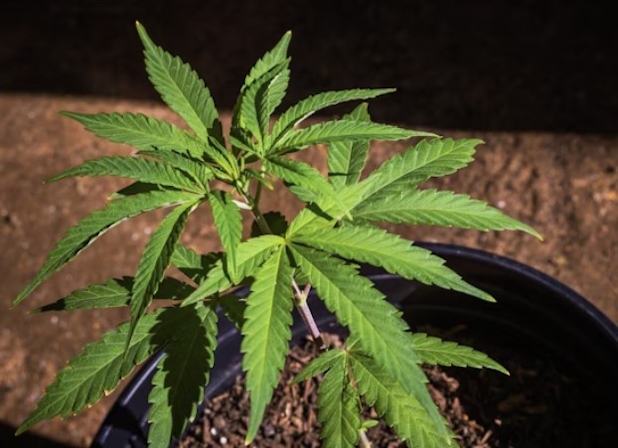
Some folks have been able to successfully germinate seeds after storing them for 10 years in a refrigerator. Though, this method is debated among growers and breeders out there. If you open and close your fridge a lot, the seed will be subjected to sudden temperature changes. You also risk exposing your seeds to excess moisture, allowing them to rot.
To protect against these concerns, keep your seeds in an opaque airtight container. Throw in a food-grade desiccant pouch to suck up any moisture. Vacuum sealing your seeds with desiccant also works well.
Refrigeration

Photo by
Andrea Piacquadio
Choosing the right cannabis seeds will depend on your goals, experience level, and grow space. If you’re growing outdoors, you won’t need auto-flowering seeds. But if you’re growing indoors for the first time, opting for auto-flowering, feminized seeds is definitely an easy place to start.
If you want to try growing some weed seeds you found in your bud, it’s important to check if the seed is mature. If the coloring is a dark brown color with an almost tiger-strip-like pattern, then you’re good to go. But if the seed is a light, off-white color, it’s not ready to be germinated.
Freezing
Freezing is another seed-saving technique that sparks debate. When you freeze seeds, some of the cells will rupture because of the bitter cold. You also risk drying the seeds out the longer they’re kept in such intense temperatures. However, some folks swear by the freezer method.
If you want to try some freezer seeds, keep them in a vacuum sealed container with a food-grade desiccant. Make sure they aren’t exposed to too much light or drastic swings in temperature.
With both the freezing and refrigeration methods, make sure you warm your seeds to room temperature before trying to germinate them. Just let them sit out for a bit in a dark container. You don’t want to shock the seeds with sudden temperature changes.
Growing from seed is a beautiful thing. Taking your plant from seed to sprout to full-bloom is a miraculous and therapeutic experience. Growing great cannabis takes a bit of forethought and preparation, however. It’s best to do your research ahead of time and plan out what approach you’re going to take with your plants.
Where To Buy The Best Cannabis Seeds

Choosing the right cannabis seeds will depend on your goals, experience level, and grow space. If you’re growing outdoors, you won’t need auto-flowering seeds. But if you’re growing indoors for the first time, opting for auto-flowering, feminized seeds is definitely an easy place to start.
If you want to try growing some weed seeds you found in your bud, it’s important to check if the seed is mature. If the coloring is a dark brown color with an almost tiger-strip-like pattern, then you’re good to go. But if the seed is a light, off-white color, it’s not ready to be germinated.
Ask Your Local Dispensary

If you’re lucky to live in a state that allows home growing either recreationally or for medical use, then you may have an easier time finding seeds. In California, for example, medical cannabis patients can obtain seeds that were produced inside of the state without violating state law. However, they cannot be sent via mail and you must have your medical marijuana authorization verified in order to acquire them.
Every marijuana state, whether it’s medical only or includes recreational, has its own unique cannabis laws. Asking a local dispensary or connecting with an in-state breeder can give you more information about the laws in your particular region. For the most part, viable seeds that come from out of state sources, be it domestically or internationally, are still illegal.
Online Seed Banks
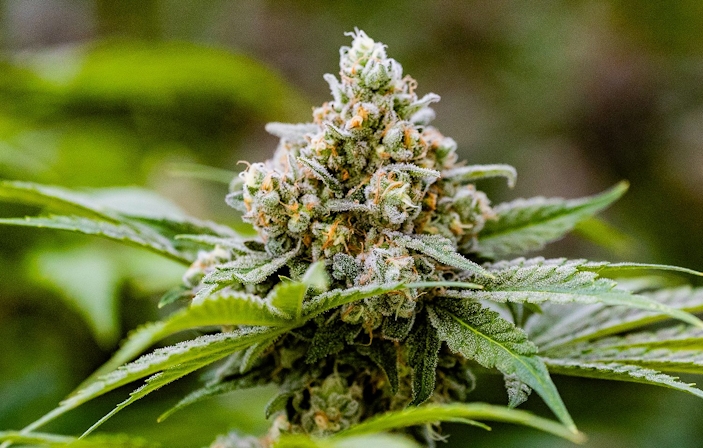
U.S. Customs laws are quite odd. Having seeds shipped to you domestically, from another U.S. state can get you into trouble. But, ordering seeds from another country seems to be a weird gray area. There are quite a lot of international seed companies out there, and many that ship to the U.S. have been in business for quite some time.
This is quite strange, considering that sale and trade of marijuana products is federally illegal. Many seed companies attempt to get around this by selling seeds as “souvenirs” that are not to be germinated.
According to GrowWeedEasy, if your marijuana seeds are confiscated while in route from another country, they’ll most likely be tossed out by customs officials. You’ll also get a letter saying that your package has been taken because it violates customs laws (see video above). If that happens, many seed banks will typically send you another package free of charge.
Having seeds is illegal under federal law as well as in states that don’t allow home growing. It’s definitely still possible to face legal repercussions from ordering seeds, but many mail-order enthusiasts will tell you that it isn’t that likely. If it’s illegal to grow in your region, you will probably face legal repercussions if you’re caught with germinating seeds. Having viable seeds in your possession is still a risk, however. So, it’s really up to you to make the personal decision of whether or not you want to order.
Beware of fraudulent seed companies that will take your money without sending you anything, or will send you things you didn’t order.
Growing from seed can be extremely rewarding. Not only do you get to watch your plant sprout from what seems like nothing, but you also have more of an opportunity to mix and match and play with genetics. Clones are typically easier to come by in most marijuana states, but if you’re lucky enough to have access to seed, it’s definitely a worthwhile experience.
—
Do you have any go-to tips for growing cannabis seeds? Share them with us on social media. We’d love to hear from you!
Herb Recommended Products:
READ MORE











